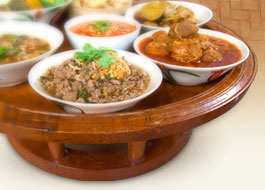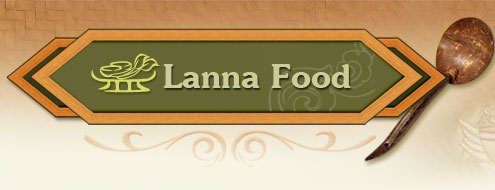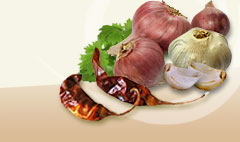Garlic |
|
|
 | Allium Sativum Linn. |
|
| |
 | Alliaceae |
|
| |
 | Garlic |
|
| |
 | Hom tiam, Hom khao (Northern); Krathiem khao, Hom thiam (Udon Thani); Pa-se-wa (Mae Hong Son); Thiam (South-Pathani) (Kanchana Diwiset, et al., 2005, 10) |
|
| |
 | Annual, underground bulb tufted, conical. Stem cylindrical or angular at the top, 30-45 cm. high. Leafy at the base, leaves simple, glabeous, 30-60 cm. long, 1-2.5 cm. wide. Inflorescence umbellate, terminal spathaceous; flowers with 6 oblong-lauceolate perianth segments, white or pinkish. (Kanchana Diwiset, et al., 2005, 10). A single bulb (without cloves) kind is called krathiam tone or hom thok in Lanna dialect, can be pickled with honey to serve as a kind of tonic (Rattana Phromphichai, 1999, 7528) |
|
| |
 |

Contains protein, sugar, fatty acid, amino acid, vitamins and minerals, e.g. B1, B2 and C. (Rattana Phromphichai, 1999, p. 7527). It also contains carbohydrates, calcium, phosphorus and iron. (Phak Phuen Ban A-han Phuen Mueang, 2007, p. 30) |

Leaves are spicy hot and pungent and good for drying up phlegm, to aid blood circulation, to treat stomach upset. Bulb: good to treat coughs, skin diseases, ringworm, cancerous wounds, good as a tonic for the blood, for neurological problems, earaches, fever, hemorrhoids, for expelling worms from the intestine, treating mouth sores, asthma, paralysis, to induce urination, to treat weak lung, tuberculosis, bringing up phlegm, to treat scurvy and hiccups. (Kanchana Diwiset et al., 2005, p. 10) |
|
| |
 | Winter |
|
| |
|
|
| |
 |
Kanchana Diwiset, et al., Compiler. (2005). Phak Phuen Ban Phak Nuea.Phennapha Sapcharoen, Ed. 2nd ed. Nontaburi: Center for Traditional Thai Medicine Text. (in Thai). Phak Phuen Ban A-han Puen Mueang. (2007). Bangkok: Fai Aphai Co., Ltd. (in Thai).
Rattana Phromphichai. (1999). Hom Thiam.InSaranukrom Wattanatham Thai Phak Nuea (Vol. 14, pp. 7527-7529). Bangkok:The Siam Commercial Bank Foundation for the EncyclopediaofThai Culture. (in Thai). |
|
| |
|
|




